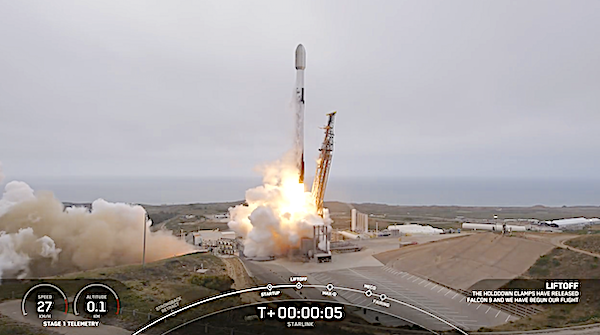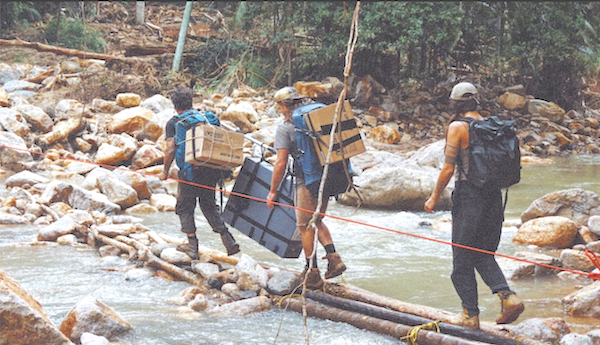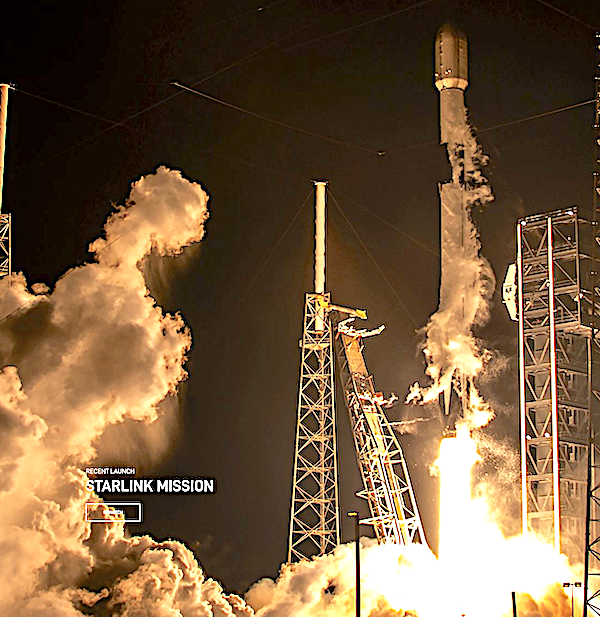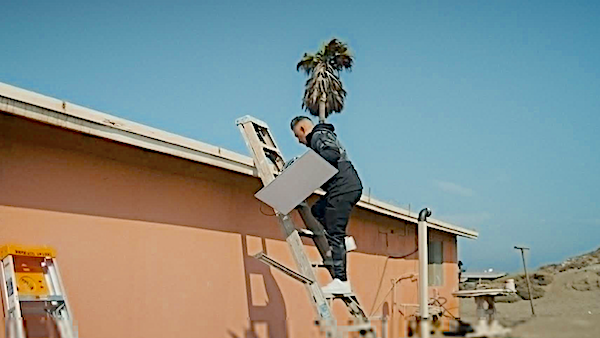
On a super foggy Friday, May 23 at 3:32 p.m. PT, Falcon 9 launched 27 Starlink Group 11-16 smallsats to low-Earth orbit from Space Launch Complex 4 East (SLC-4E) at Vandenberg Space Force Base in California. Photos by Satnews.
This was the 18th flight for the first stage booster supporting this mission, which previously launched SDA-0A, SARah-2, Transporter-11, and now 15 Starlink missions.
SpaceX’s Falcon 9 rocket launched SpaceX’s Starlink Group 11-16 of 27 smallsats from Vandenberg Space Force Base today at 4:36 p.m. EDT (1:36 p.m. local time; 2036 GMT).

About 8.5 minutes after liftoff, the booster landed safely on SpaceX’s Of Course I Still Love You drone ship, stationed in the Pacific Ocean. This was the 450th successful landing of a Falcon 9 rocket, according to SpaceX.
SpaceX moves Starlink Group 11-16 smallsats launch to Friday due to various factors

A grassroots group of volunteers stepped up, including Australian pro surfer Mick Fanning.
The date and time of SpaceX’s Falcon 9 launch of Starlink Group 11-16 including 27 smallsats into low Earth orbit has been moved to Friday, May 23rd from 1:36 PM – 5:36 PM PDT. The launch was moved to Friday from its initial Thursday date due to various factors including the specific orbital parameters needed for the satellites and mission requirements. The forecast calls for a temperature of 59 °F, clear skies, 3% cloud cover and a wind speed of 19 mph.
Launch dates and times are not just for convenience; they are carefully planned to align with the required orbital plane, considering the location of the launch site, Earth’s rotation, and the time of day.
The elements considered before determining a launch date and time are based on the following:
- Orbital Requirements: SpaceX needs to ensure the satellites are placed in the correct orbit, which involves considering factors like altitude, inclination, and the timing of the launch with respect to Earth’s rotation.
- Mission Requirements: The specific mission objectives for the satellites also play a role in determining the launch window.
- Launch Site and Earth’s Rotation: The launch site location and the Earth’s rotation influence the alignment of the launch trajectory with the desired orbital plane, which can affect the timing of the launch.
- Weather Conditions: SpaceX also considers weather conditions, as they can impact the launch vehicle and the ability to deploy the satellites successfully.
- Launch Window: The launch window is a period of time within which SpaceX can launch the rocket. The window is determined by factors like orbital requirements and weather conditions, and it can be adjusted based on the specific mission and any necessary changes to the schedule.
The Falcon 9 first stage B1075 will attempt to land on ASDS OCISLY in the Pacific Ocean after its 18th flight. Booster B1075 last launched 02/01/2025 and has seen 17 successful launches and landings. Falcon 9 Block 5 booster first used for the Starlink Group 2-4 mission.
SpaceX to launch Starlink Group 11-16 smallsats hours earlier on Thursday

SpaceX is targeting Thursday, May 22 for a Falcon 9 launch of a batch of Starlink Group 11-16 smallsats, to low-Earth orbit from Space Launch Complex 4E, Vandenberg SFB. Liftoff is targeted for 1:58 PM – 5:58 PM PDT.
The forecast calls for a temperature of 64°F, scattered clouds, 35% cloud cover and a wind speed of 15mph.
The launch will take place at Space Launch Complex 4E which has witnessed the launch of 193 rockets, including 193 orbital launch attempts. While Vandenberg SFB, California, has been the site for 807 rocket launches

SpaceX is targeting Thursday, May 22 for a Falcon 9 launch of a batch of Starlink Group 11-16 smallsats, to low-Earth orbit from Space Launch Complex 4E, Vandenberg SFB. Liftoff is targeted for 11:19 p.m. ET, with backup opportunities available until 11:23 p.m. ET.
The launch will take place at Space Launch Complex 4E which has witnessed the launch of 193 rockets, including 193 orbital launch attempts. While Vandenberg SFB, California, has been the site for 807 rocket launches.
SpaceX will begin building a new shell for its Starlink constellation, launching from Vandenberg to a polar orbit. At least two other Starlink launches are planned for the week as well.
The forecast calls for a temperature of 65°F, scattered clouds, 33% cloud cover and a wind speed of 15mph.
A live webcast of this mission will begin about five minutes prior to liftoff, which you can watch on X @SpaceX. You can also watch the webcast on the new X TV app.
